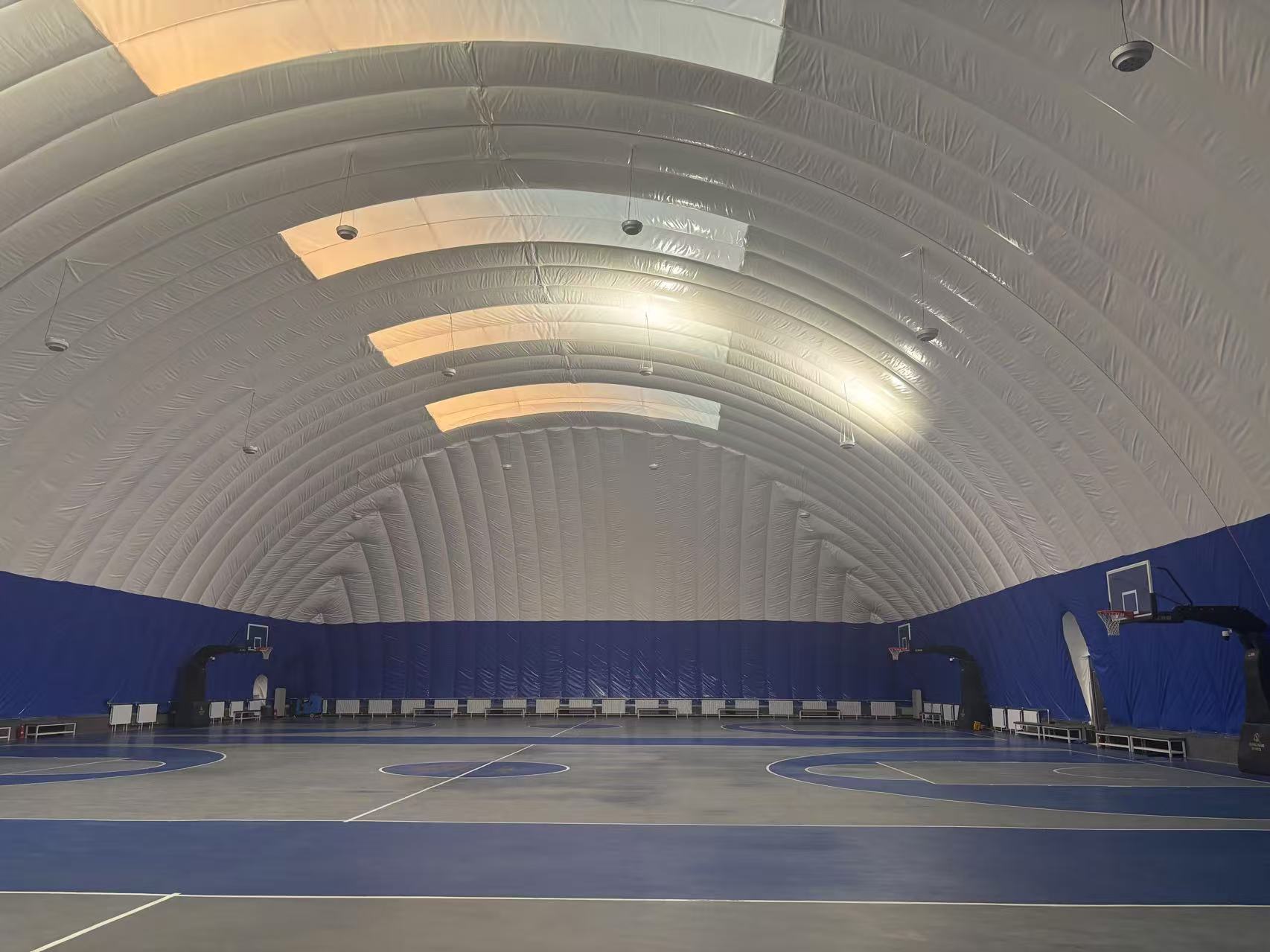Air-supported Sports Domes: Unlocking New Spaces for Sports
Release time:
2025-03-27
Air-supported sports domes are innovative structures that utilize air pressure to support their design, with a membrane as the primary building material. This unique support method eliminates the need for traditional structural elements like beams and columns, allowing for efficient use of interior space and creating a spacious, unobstructed area for activities, providing users with a sense of openness.

The core component of the Xinyuan air-supported sports dome is its membrane, made from high-strength, highly flexible special architectural film materials. These materials not only possess excellent physical properties, capable of withstanding significant tension and pressure, but also have good durability, allowing them to adapt to various complex natural environments. Some membrane surfaces are treated with special coatings that provide self-cleaning capabilities, enabling them to maintain a clean appearance with just rainwater, significantly reducing maintenance costs.
The advantages of air-supported sports domes are not only reflected in their unique structure and materials but also in their outstanding performance during actual use, making them leaders in the field of sports architecture.
The construction speed of air-supported sports domes is significantly advantageous compared to traditional sports venues. The construction of traditional sports facilities involves tedious processes, including foundation work, framework assembly, and interior decoration, which require extensive concrete pouring, brick stacking, and steel structure installation, often taking months or even years. In contrast, air-supported sports domes employ modular designs, combining factory prefabrication with on-site assembly, greatly shortening the construction timeline. This rapid construction capability not only saves time but also allows venues to be operational quickly, generating value.
From a cost perspective, air-supported sports domes do not require extensive foundation treatment or complex steel structure assembly. The materials used, along with lightweight steel structures, are relatively low-cost, resulting in total construction costs being only one-third to one-fifth that of traditional sports facilities. During operation, air-supported sports domes also consume less energy. The double-layer membrane structure provides excellent thermal insulation, and with high airtightness, energy consumption for heating and cooling is reduced by about 30% compared to traditional buildings.
The beamless and column-free design significantly enhances the space utilization of air-supported sports domes. Without the obstruction of traditional beams and columns, the interior space is open and fluid, allowing for flexible division of functional areas according to different needs. These venues can host a variety of sports events, including basketball, football, and tennis, as well as concerts, exhibitions, and large conferences.
In terms of safety performance, the Xinyuan air-supported sports dome exhibits excellent fire resistance, meeting the national B1 fire rating standards, effectively preventing the spread of fire. In structural design, the dome considers factors such as wind load, snow load, and seismic activity. The overall load-bearing structure evenly disperses external forces, making it capable of withstanding typhoons of level 16 or higher and certain levels of earthquakes. The equipped intelligent control system can monitor the building's status in real-time, automatically alerting and activating emergency plans in case of abnormalities. For instance, during strong winds, the system automatically adjusts the internal air pressure to enhance the stability of the membrane structure, ensuring the safety of users and their property.
In our daily lives, air-supported sports domes are becoming increasingly common, adding a rich and diverse sporting experience to people's lives.
Keywords:
Latest News










